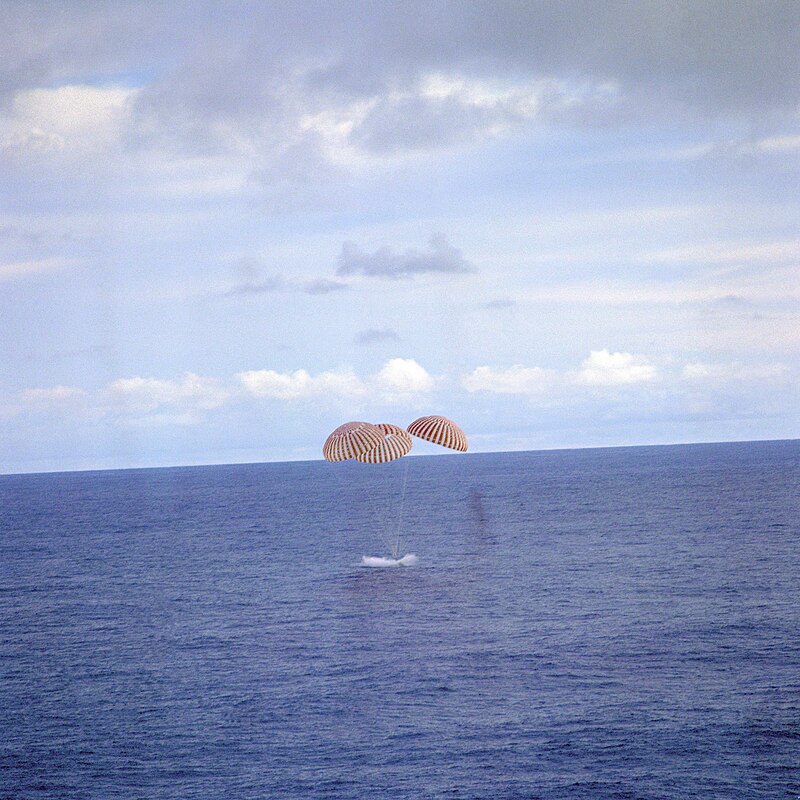CarVac said:
Wow. How much drag does the ringsail sacrifice compared to a normal parachute of the same open size, and of the same packed volume?
Using Knacke's numbers*, a hemi chute's Cd is 0.62 to 0.77, whereas a ringsail is 0.75 to 0.85 and is used in descent applications where v is < M 0.5.
Greg
* Ref.: NWC TP 6575, Table 5-2 "Slotted Parachutes", March 1991
{I dearly *love* soapboxes... :grin:}
(with consideration of the fact of the 'hemi' now being obsolete (as is the Flat Circular (i.e. your standard hobby canopy) - Cdo of 0.75-0.80*) - or the Conical (not obsolete) - Cdo = 0.75-0.90* (but this assumes 'bias' construction - thus allowing the fabric to stretch into the more normal hemispherical shape - improving that Cdo) -- and also noting the fact that, *of the slotted canopies*, the ringsail is the most efficient (in terms of drag - Cdo) - but I didn't build mine for that reason - I just simply wanted one). *Knacke - Table 5-1
All those trivial details are neither here nor there (but thanks for bringing this up, Greg ) - because what prompted my reply is this...
Folks will notice CarVac's question...
CarVac said:
Wow. How much drag does the ringsail sacrifice compared to a normal parachute of the same open size, and of the same packed volume?
"How much.... compared to..."
I was using the technically more correct term "Cdo" (but Greg's use is fine for what he was trying to point out) - which means: "Cd referenced to NOMINAL diameter (Do)" (which is the diameter of a circle with the same (fabric - or 'surface') area as the canopy in question).
When you frame your technical specs that way -- then CarVac's question is easily (and rationally) answerable -- because *all* these numbers relate to each other and direct comparisons are trivially simple ---- a 'Cdo' of 0.80 is a more efficient canopy than a 'Cdo' of 0.75 - and one can use 7% less fabric (0.80/0.75) (and have 7% less weight in the recovery system) to create the same drag and, thus, have the same descent rate (and it doesn't matter a tinker's damn where that fabric is (in the canopy),... nor what shape it takes when inflated,... nor what that 'inflated diameter' is (as nearly impossible as that would be to measure),... nor...). None of it. Simply compare 'Cdo' to 'Cdo' and you have your answer.
The professional recovery industry did it that way (thank goodness) for precisely that reason - so that *direct comparisons* are possible. Good for them! Now, if we could get the hobby to do likewise..., well, I wouldn't need as many soapboxes <g>.
(Did anybody notice these numbers and how much _lower_ they are than what you hear in hobby parachute advertisements? Now you know why - and now you know why I ignore claims touting drag performance as much as (or more than) 200% above those numbers. Ain't gonna happen. That dog just won't hunt.)
OK, enough already -- now where was that *other* soapbox I was looking for....
.....
But, thanks Greg (and CarVac) for setting this one up right in my path.
(Sorry, Kevin, but there's just no way I was going to ignore this one.)
-- john.







![the-apollo-16-command-module-stocktrek-images[1].jpg the-apollo-16-command-module-stocktrek-images[1].jpg](https://cdn.imagearchive.com/rocketryforum/data/attachments/150/150869-0a31f3b70d6ee241426068c32f063a92.jpg)








